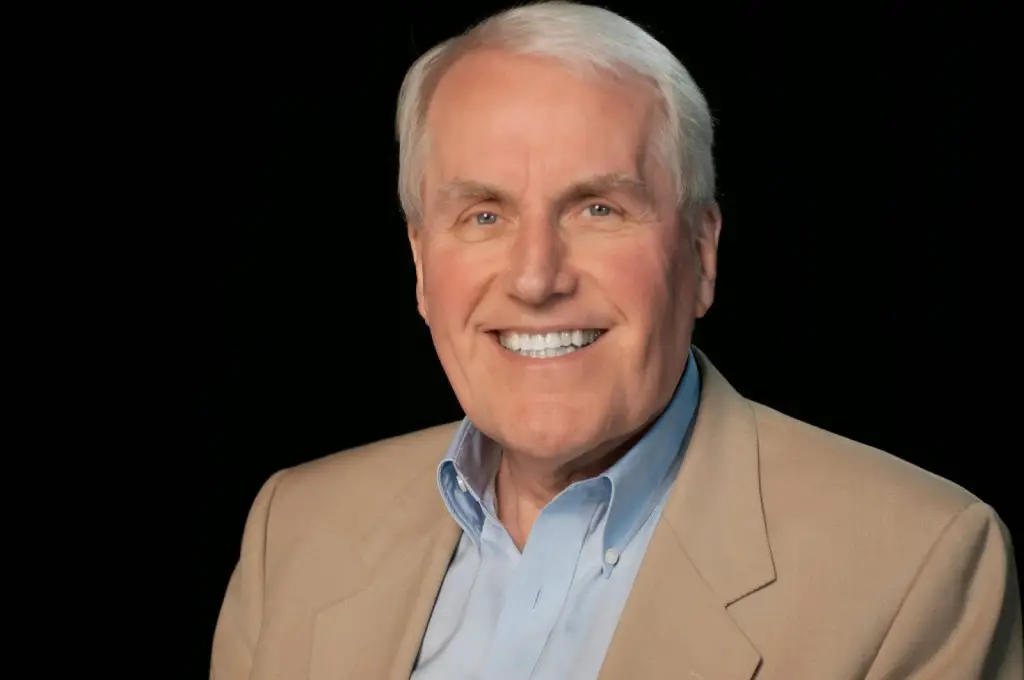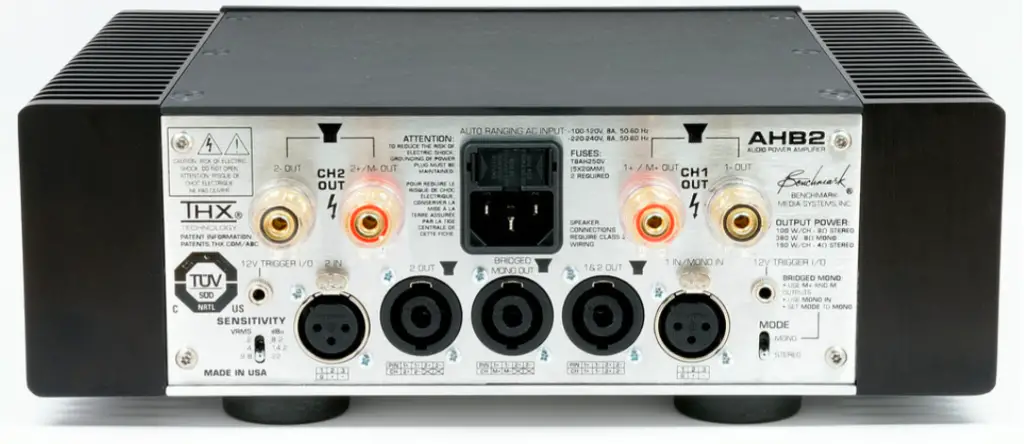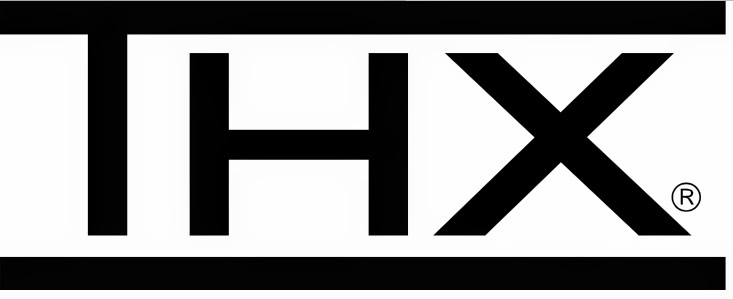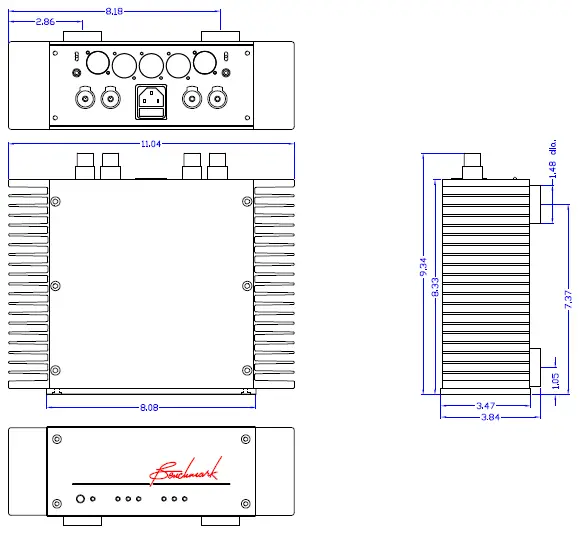THX needs little to no introduction. Yet, many are unaware that THX first got its start to ensure that Return of the Jedi’s soundtrack would be reproduced accurately in theaters. From then on, THX’s theatrical trailers with the trademark “deep note” glissando have become a favorite with both moviegoers and home theater enthusiasts alike. Seeing a product with THX certification has come to mean that the product has achieved a standard of excellence.
Over the years, audiophiles and home theater enthusiasts have been accustomed to seeing the THX logo on audio equipment, including power amplifiers. Until now, those THX certified amps have been traditional designs. Not any more. Benchmark Media recently released the AHB2, a THX logo bearing audio amplifier that has marked a change.
Benchmark’s AHB2 isn’t your typical power amp. It’s the first commercial product based on THX’s Achromatic Audio Amplifier (AAA) technology.
 |
| The Benchmark AHB2 Power Amplifier based on THX AAA Technology |
In anticipation of receiving the Benchmark AHB2 for review, I reached out to Laurie Fincham, THX’s Senior Vice President of Audio Research, to dig a bit deeper into the technology behind the product. Laurie was kind enough to talk with the Poor Audiophile from his San Francisco office.
The first thing you need to know about Laurie is that he’s an audiophile’s audiophile. He’s an engineer, music lover, and also a musician. Laurie played string bass in an acoustic band for 17 years. “Playing was so relaxing.” He says, “I couldn’t think about work while I was playing, so even though there were late nights, I always felt rested.”
 |
| Laurie Fincham SVP of Audio Research at THX |
Talking with Laurie was a bit intimidating. For those unfamiliar with Laurie’s distinguished background, he first started in the audio industry in the 1950’s as it was taking shape. “The birth of HiFi really started after the end World War II.” Laurie noted “At that time for many servicemen one of the only form of entertainment was listening to the radio, which in turn, led to an increase in listening to music. When they returned, the equipment they had to play it on was the phonogram—where convenience often trumped quality. Many of those returning had received an education in electronic and wireless technology and some thought they could make something better. It was the beginning of hobby HiFi that was soon to turn into a major industry. It is no coincidence, I feel, that many of the most famous companies were founded in the early fifties by hobbyists, I can think of Ed Villchur, of AR fame, for example”.
Growing up in the UK in this environment was extremely influential for Laurie. As a young boy he tinkered in creating his own speakers. That experience of building speakers foreshadowed things to come.
Laurie quickly became internationally known for his work as technical director at the venerable UK speaker manufacturer, KEF. For 25 years, Laurie was involved in designing some of the most iconic speakers in KEF’s rich lineage—including the development of the Uni-Q driver. In 1993 he moved to California to work for Infinity Systems and for the past 18 years, he’s been at THX.
At THX, all audio research and development of new audio technologies falls under Laurie’s purview. After such a distinguished career in the audio industry, I asked Laurie what brought him to THX. “Since I was four, I’ve been a cinema fan but not in the business. I’ve always been in sound since about the age of 13 or 14 making speakers. THX was attractive because of the combination of sound and picture and some freedom to go after things for their own sake.”
Though his title has changed over the years at THX, his responsibilities haven largely stayed the same. “My responsibility at THX is to direct the R&D team to find out what needs to be improved to get a better sound experience and hopefully come up with an answer,” said Laurie. Laurie’s work has garnered him several industry awards including the prestigious AES (Audio Engineering Society) Silver Award that recognizes individuals for outstanding developments or achievements in the field of audio engineering.
I asked Laurie if his experience designing speakers in any way influenced his role at THX. “The speaker is the messenger and so it often gets blamed for any bad sounds,” Laurie said. “When I first started working on speakers and I heard a bad sound, I quickly found it could be due to the listening environment or the source material not just the speaker.” Looking at the entire signal chain, not just a single part, was a key lesson that he had learned along the way.
While consumers see the THX logo on products, THX is a business-to-business technology company. THX does not make products directly, but licenses its technology and solutions to other companies. Laurie has been involved in specifying the performance requirements for amplifiers, loudspeakers and DSPs needed to meet the requirements for THX certification for home cinema, multi-media systems and automotive. With regard to the specification for audio amplifiers, Laurie said, “It is important to set the power specs to meet the real needs of speech and music reproduction, rather than some test signals.”
Talking about amplifiers served as a natural segue to dive into THX’s AAA technology. Laurie and I spoke a bit about existing amplifier topologies. “The Class A analog amplifier is a luxury,” he said. “Big, expensive, beautiful, but hot.” We talked about other topologies including recent moves to make audiophile Class D amplifiers. “Most people think Class D is a recent innovation,” Laurie said. “Class D is, in fact, as old as solid state and goes back to the late 50s or 60s.” With so many existing amplifier topologies at their disposal, I asked why there was a need to develop a new one.
“About 10 years years ago we were working on a steerable line array that was to be driven by 32 channels of amplification and we found that the existing class AB amplifiers weren’t quiet enough when all the amps were running and they ran too hot, even when they were idling.”
“Why didn’t you go to solutions like Class D?”, I asked.
“At that time we still couldn’t find class D amps that ran cool enough when idling or were quiet enough,” Laurie replied.
In other words, THX’s requirements gave Laurie’s team an opportunity to look for a better way to address some of the shortcomings of today’s existing amplifiers. In the classic sense, necessity led to the invention of AAA technology.
“We wanted to see what we could do to get an amplifier to run cooler and so we looked at the way amplifiers generate heat when playing music. And then set the goal to develop an amplifier that was small, ran cool, and approached the mythical audio quality of a Class A amplifier.”
Laurie went on to say, “Essentially an amplifier is something that pulls energy from a source in time with the music. How much of that goes into sound and how much into heat depends on the amplifier’s technology.” Simply put, existing amplifier technologies didn’t meet THX’s extreme requirements. They just ran too hot.
Instead of building upon existing technologies, Laurie and his team decided to design a better amplifier technology from the ground up. Laurie was quick to point out, “We didn’t invent or reinvent the amplifier. Instead, we looked at the shortcomings, the physics, and developed a technology to deal with that. We were motivated to do better. We didn’t stop.”
I wondered what, if anything, had changed to enabled Laurie and his team to come up with a new amplifier technology. “What’s changed is the availability of modern design and simulation tools and new solid state devices that has enabled us to look at some old ideas with a new eye. As I said, we didn’t invent or reinvent the audio amplifier but looked at the shortcomings, the physic and developed a technology to deal with that.”
Speaking of physics, Laurie and I then spoke about the technical specifications THX achieved with AAA as a result of the technology. “This amp will stay within a fraction of its low level distortion right up to within 1db of its full output. Distortion is about 100x lower than what we’ve seen before and the S/N ratio is much higher. These low levels of distortion were particularly difficult to measure.
I asked Laurie what he meant by that.
“It was quite tricky to measure because the distortion levels were so low that we were sometimes seeing some of the distortion of the measurement equipment itself rather than the amplifier. Even the measurement procedure had to be re-learned because this could also affect the result. We only felt we had the correct answer when three different engineers using different equipment got the same answers.”
So what’s the result of this reduced distortion and S/N ratio? “The amp won’t draw attention to itself,” Laurie said, “It’s a clear window to the music. And it’s the aim of keeping the signal clear and pure that inspired the name for the technology”.
“AAA stands for Achromatic Audio Amplifier. Achromatic means ‘without color.’ Our goal was to develop an amplifier that didn’t add any coloration to the signal, just amplify it.”
The way Laurie kept talking about what he and his team were doing, I could tell that the research process was extensive. “And how long did that take?” I asked.
“We’ve been working on the amplifier on and off since 2006. Almost nine years. We kept working at it. Even then it wasn’t a product.”
“Wait,” I said to myself, did he just say it was not a product? I did a bit of a double take.
I repeated his statement back to make sure I had heard it correctly. “It wasn’t a product?”
“Yes, we don’t make anything. We do R&D.” Laurie said. “Many companies don’t do R&D anymore. Few companies have the resources to allocate to R&D. So we took it from the lab to a product with someone who was already in the market. We did the design and they took it to market.”
Laurie was alluding, of course, to Benchmark. Benchmark is a company who is already well known world-wide as making some of the best DACs on the market for both professional and audiophile setups.
As heralded as Benchmark’s name has been, however, I remarked, “Benchmark isn’t the first company that comes to my mind when I think about companies that make amplifiers. How did Benchmark come to adopt AAA technology?”
“THX knew Benchmark from a former professional association. We floated the idea of sharing our technology with them so they could make an amplifier that would match the noise and distortion performance of their DACs. John Siau, the technical chief at Benchmark, asked us to show that THX AAA technology could do this. He gave us his spec and we did the design work to show it could.”
 |
| The AHB2 Bears the THX Logo on the rear of the amplifier |
While audiophiles have gushed over Benchmark’s DACs, I asked Laurie if he expected that audiophiles would adopt AAA-based amplifiers. “I expect audiophiles to listen. You’re either going to take it on measurements or the sound, which will be dominated by the speaker in the room. Audiophile speakers are in a class of their own with their crossover design. The job of an audiophile amplifier design is to have the amplifier cope with what’s thrown at it.”
Regardless of design, an amplifier and an entire system is ultimately about the music. It’s about reproducing the score to convey the artist’s intent. Let’s be frank, put any two audiophiles together and given enough time, the discussion of gear will turn to the music; and that’s exactly how our conversation went. We reminisced a bit about how music has changed over the years.
Given Laurie’s perspective and insight into the industry, I became like a student listening intently to a professor relating his experiences. “In 1970s,” Laurie said, “the industry got taken over by the Japanese where feature sets dominated and we lost sight of what we started out to do: play music. Today it’s worse. Now free and quick is what it’s all about. We don’t listen to music anymore the way we used to. We don’t buy albums and then come home and read through the liner notes. We don’t know what we’re listening to anymore.” Laurie then paused and said, “Music is such a basic thing that we all experience. Perhaps the next generation will want to listen to live music, to concerts and bring that home.” I couldn’t agree more.
Before we ended our time together, I asked Laurie, “If you could speak to our readers directly, what would you want them to know about THX and AAA?” Without missing a beat, he said, “THX is about taking the listener or viewer as close as possible to the original. The craftsmanship that goes into the soundtrack or the image in a movie is seldom seen or heard by the end customer and we want to see how we might improve the transmission from source to end user to make that possible. The development of AAA was part of that. Maybe I could have my cake and eat it too. It was to have the performance of Class A without the heat and weight.”
I expressed my deep thanks to Laurie and want to do so again. His passion for music and music reproduction shone throughout our conversation. Following our interview, I became truly excited to receive my review sample of the Benchmark AHB2 amplifier (you can now read about my unboxing and first impressions of the AHB2 here). It’s obvious to me that this THX technology is a means to an end. It’s really all about the music.












